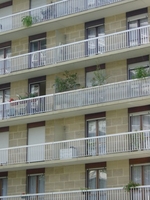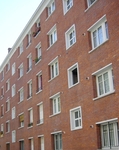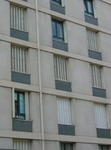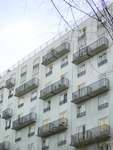RECOLCI harmonises energy rehabilitation and apartment buildings

Five million apartment block units were built in France between 1949 and 1974. They represent 57% of the dwellings built during that period and 16% of total existing stocks. The average primary energy consumption of the apartments built at that time is between 300 and 350 kWh/m2 p.a. The mere mention of these figures is enough to indicate the importance of the RECOLCI research programme for energy rehabilitation of apartment buildings through integrated components. Its objective is clear: energy improvement of these buildings, setting a consumption target ranging between 80 and 150 kWh/m2 p.a. or a reduction of more than 50% compared with the present situation. RECOLCI falls quite naturally within the objectives of the Multi-Stakeholders’ Consultation Meeting on the Environment and “Factor 4” aimed at cutting greenhouse gas emissions by a factor of 4 by 2050. “Our work involves defining solutions for energy rehabilitation through the external envelope of apartment blocks up to 8 storeys high built during the thirty-year post-war boom”, says Bertrand Ruot, CSTB project leader. “These buildings are some of the worst energy guzzlers in France!"
The official launch of RECOLCI took place in April 2008, but many months of preparation were needed. Its conclusions have to be submitted by the end of 2009. The project is coordinated by ArcelorMittal and a number of other partners including the CSTB are also involved (see text box). “It comprises four main phases, the first two of which are completed or soon will be, continues Bertrand Ruot. The first consisted of an “X-ray” of the apartment stocks (number, age and profile of owners and occupiers, type of walls, windows etc.) to determine the material on which we had to work. We then proceeded to draft the functional specification”. The third stage of the project – also under way – involves defining the technological solutions for rehabilitation of the housing units. A concrete practical document will then be prepared. Drawings, installation regulations etc. forming a genuine user guide which will just need to be followed step by step!
Validating the relevance of the rehabilitation concepts
The final phase of the RECOLCI programme will involve validating and evaluating the relevance of the rehabilitation concepts developed. Consisting naturally of technical feasibility, implementation, energy gain and environmental impact analyses, but also assessment of the costs of the solutions recommended and their acceptability by the occupiers. “We are acting in partnership with a “Users’ Club” formed by the building managers, such as the Union Sociale de l’habitat and Saône-et-Loire OPAC, continues Bertrand Ruot. By collaborating in this way we can define the needs and expectations associated with these operations on the one hand and find ways to get residents to accept the resultant changes on the other.” Many parameters are factored in, such as the impact on service charges, changes to the appearance of façades, brightness variations inside the apartments etc. It is a way of obtaining a complete picture of the spectrum of advantages and disadvantages of the various rehabilitation systems proposed.



A number of partners, one coordinator
RECOLCI is one of the research programmes selected in response to the 2007 PREBAT call for projects (technology section). It is funded jointly by the Environment and Energy Management Agency ADEME and has been certified by the Advancity competitiveness cluster. The partners, both companies and construction professionals (Saint-Gobain Isover, Aldès, Vinci Construction France, EDF R&D and the architects AETIC) are coordinated by ArcelorMittal Research.
